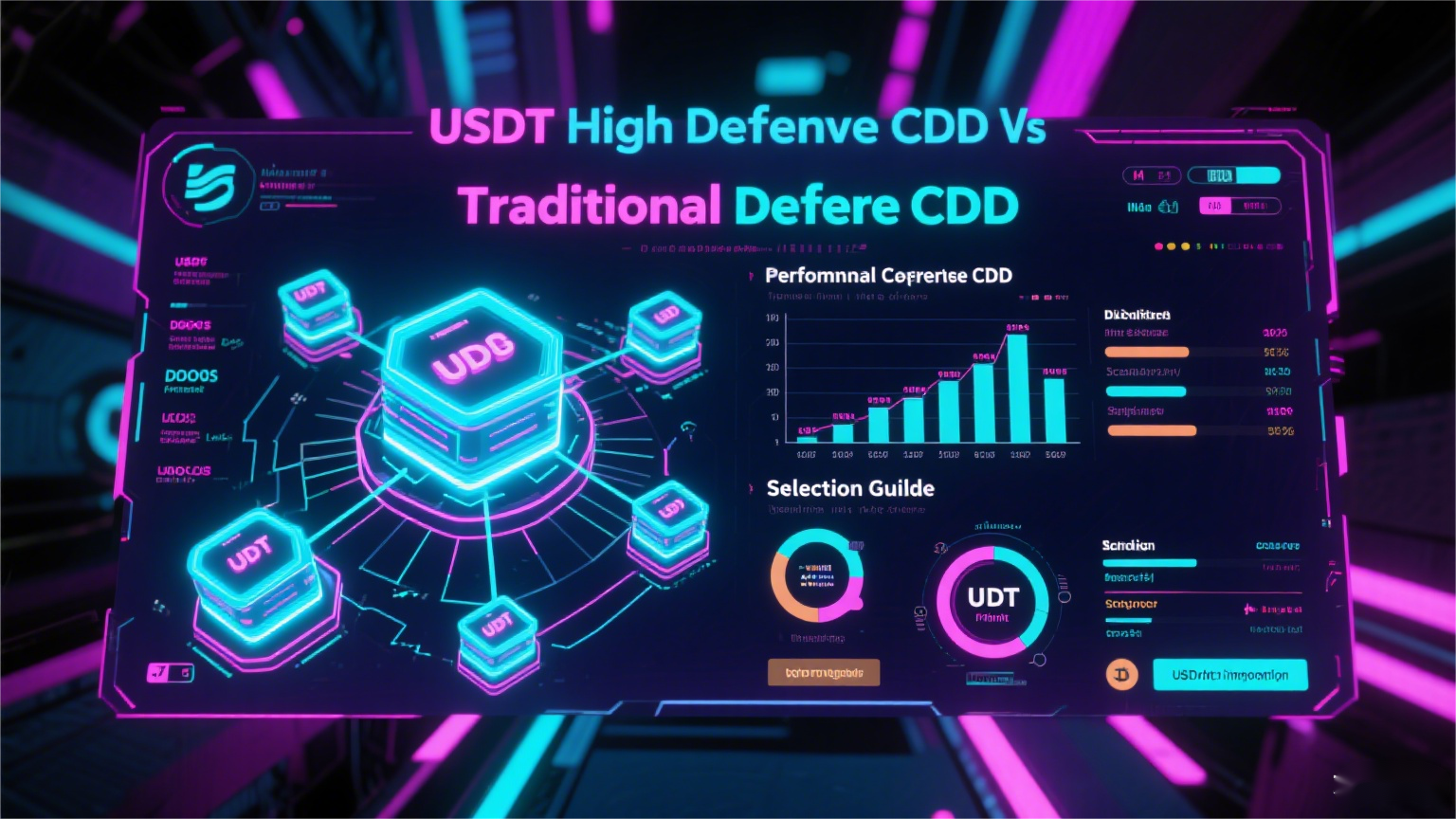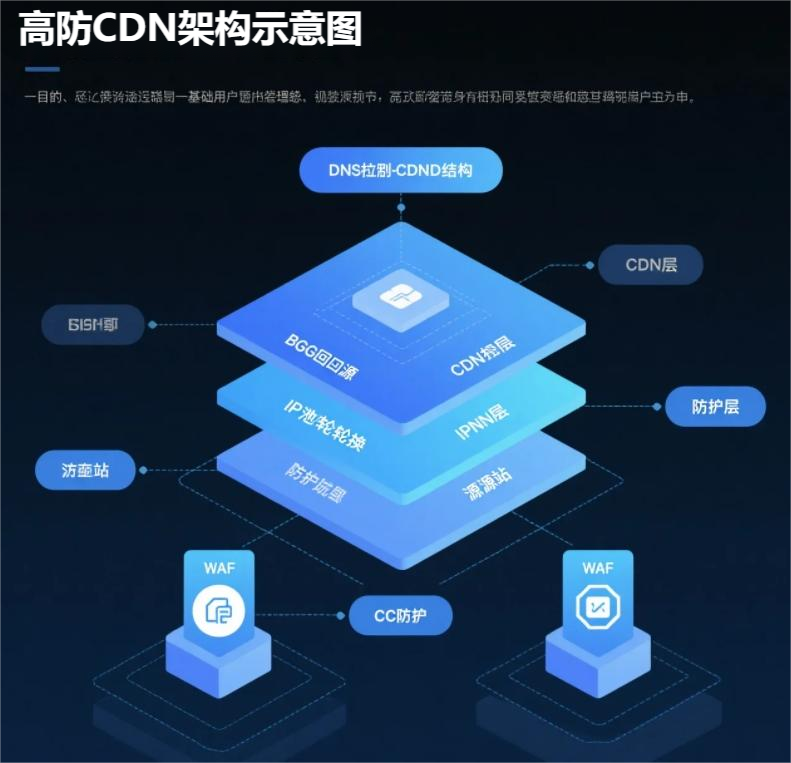USDT-Supported High Defense CDN vs. Traditional High Defense CDN: Comprehensive Performance Comparison & Selection Guide
Traditional high defense CDNs come with contract constraints, ensuring stability and compliance but featuring high costs, cumbersome processes, and strict KYC requirements. In contrast, USDT high defense CDNs offer flexible on-demand payments and strong anonymity yet pose trust risks and uncertainties regarding defense authenticity. This article details the advantages, disadvantages, and suitable

First off, let's talk about traditional high defense CDNs—we’re all familiar with these. You find a service provider, sign a contract, pay either monthly or annually, using bank transfers, Alipay, or WeChat Pay. The process is formal, and you’ll get all the necessary invoices.
When it comes to defense capabilities, it mainly depends on the service provider’s resources: how many nodes they have and how robust their scrubbing centers are. The upside is stability—with a contract in place, if a major issue arises, you have someone to hold accountable. This makes them ideal for companies with legitimate businesses and clear financial procedures.
But there are plenty of headaches too.
First is the cost. When a large-scale traffic attack hits, bandwidth fees skyrocket, and the bill is painful to look at. What’s worse, you have to go through a whole process to make the payment, which can feel like "a far-off water can’t quench an immediate thirst" in urgent situations.
Then there’s KYC (Know Your Customer). Regulations are strict these days—opening an account often requires disclosing almost all your business details. For businesses that are sensitive or simply want to keep a low profile, just getting past the account-opening stage is a hassle. Flexibility is another issue: if you want to add a temporary package or use the service for a short period, the traditional process feels clunky and not at all smooth.

Now, a USDT high defense CDN is basically a high defense service that you pay for using cryptocurrency—primarily the stablecoin USDT.
In recent years, quite a few providers specializing in this have emerged, targeting users who value convenience, privacy, or have businesses with special needs.
Its biggest advantage boils down to two words: flexibility.
If you want to use it, just top up with USDT, pay as you go, and the cost is deducted based on usage or your chosen defense package—similar to recharging your phone. No need to fill out piles of forms or wait for approval. If you get hit by an attack at 3 AM, you can instantly top up and activate defense; the response speed is truly fast.
Moreover, payments are made via blockchain—all you need is a wallet address. The anonymity is far stronger than traditional methods, which is a huge draw for anyone who doesn’t want to flaunt their wealth or needs to keep their business low-key.
In terms of pricing, since intermediate links and compliance costs are cut out, the price of defense resources alone may sometimes seem more affordable.
Sounds great, right? But there are plenty of pitfalls too.
First is the trust issue. The industry is a mixed bag—some teams have vague backgrounds, and you can’t even tell where their servers are located. Their official websites might look flashy, but once you put real money in, can they actually withstand a massive attack? If they can’t and run off, where do you turn? Blockchain transactions are irreversible; once the money’s gone, it’s gone for good—unlike with banks, where you can file a dispute.
Second is the authenticity of defense effectiveness.
For traditional major providers, you can at least verify or rely on their reputation for details like the location of high defense nodes, bandwidth, and hardware configurations. But how much truth is there in USDT high defense CDNs’ claims of T-level defense and hundreds of Gbps scrubbing capabilities? Are their nodes truly globally distributed, or are they just a few points barely holding on? When facing complex hybrid attacks (CC + traffic), are their intelligent scheduling and scrubbing strategies sophisticated enough?
These are all questions that need to be asked. More often than not, you have to spend real money to test them out, and the cost of trial and error isn’t low.

Third is the trouble with payments themselves.
You need to have basic knowledge of blockchain, know how to operate a wallet, and deal with spreads and fees when buying USDT. There are also miner fees (Gas Fees) for on-chain transfers!
And while USDT is pegged to the US dollar, will service providers change their pricing strategies when the market fluctuates? You need to carefully calculate whether it’s actually a good deal.
Additionally, for customers who are used to fiat currency payments and need official invoices for corporate accounting, this payment method is simply incompatible.
Fourth is service response and legal protection.
Traditional service providers offer customer service hotlines, ticket systems, and are bound by SLAs (Service Level Agreements).
For USDT high defense services, many only communicate via online customer service (or even just Telegram groups), and the speed and quality of responses depend on luck. If a major issue occurs and causes business losses, trying to claim compensation based on a contract?
There might not even be a contract, or if there is one, it’s hard to enforce—after all, the other party’s identity may be unclear.
So, how do you actually choose? Let me break it down for you:
When to choose a traditional high defense CDN without hesitation:
If your business is completely legitimate, operated as a formal company, requires invoices for accounting, has extremely high demands for service stability and legal protection, and cannot afford any "trial and error" risks.
If the scale of attacks you typically face is manageable (e.g., under 100 Gbps), or if you have the budget to pay for brand reputation and stability. And if the KYC process isn’t a problem for you.
When to seriously consider a USDT high defense CDN:
If your business has special characteristics and has an urgent need for anonymity and quick activation. If attacks come suddenly and fiercely (e.g., frequent sudden large-scale traffic attacks) and require immediate access to massive resources—resources that traditional payment processes can’t keep up with.
If your technical team is knowledgeable enough to identify relatively reliable USDT high defense providers (by checking their operating history, customer reviews, and testing results) and is willing to take on some supplier risks.
If you place great importance on payment flexibility and (potential) cost optimization. Or if you’re an individual or small team just starting out and are stuck by the high account-opening thresholds of traditional service providers.

Key tips to keep in mind:
1. Don’t just trust the ads—verify the results: No matter how fancy their claims are, always ask for a test! Simulate real attack scenarios (such as Syn Flood, UDP Flood, and CC attacks) to personally test their scrubbing effectiveness, latency, and origin server stability. Pay special attention to how it performs at attack peaks and how quickly it recovers after the attack stops.
2. Don’t chase cheap prices—look at total costs: Factor in the costs of buying USDT, transfer fees, and potential spreads, then compare it to the total cost of traditional solutions. Sometimes, what seems like a low unit price can end up being similar or even more expensive once you add up all the extra fees.
3. Don’t put all your eggs in one basket: This is especially true for USDT high defense services—don’t rely on a single provider for all your business. Consider a hybrid approach (traditional + USDT) or use multiple USDT providers as backups. If one provider runs off or can’t withstand an attack, you can quickly switch to another.
4. Focus on node quality, not just quantity: Ask for specific details about node locations (especially backbone network access points in Asia, Europe, and the US). Are they using Anycast or single-point nodes? Is the bandwidth dedicated or shared? Do they own their scrubbing centers or rent them? These factors directly affect defense effectiveness and latency.
5. Back up your data and have an emergency plan: When using USDT services, you need to stay vigilant. Protect your origin server IP and back up important data regularly. In case the service provider has issues, you should be able to quickly switch to another defense solution.
6. Start small, then scale up: First test the service with non-core business or new projects. If it works well, gradually migrate your critical business over. Don’t top up with too much money at the start—just enough to meet your immediate needs.
Ultimately, USDT high defense CDNs are a product of market demand. They solve some pain points of traditional models (slow payments, high thresholds, poor privacy) but also introduce new risks (trust crises, service uncertainty).
They aren’t a one-size-fits-all solution, and traditional high defense CDNs aren’t obsolete either. The key is to clearly understand your business’s core needs, how much risk you can tolerate, then keep your eyes open and do your homework.
Choosing between them is like navigating the US—there are plenty of opportunities, but also plenty of pitfalls. Only by being bold yet cautious can you thrive. I hope this practical advice helps you avoid detours when making your choice.
Share this post:
Related Posts

Which is the Best Domestic High-Anti-DDoS CDN in China? A Guide to Recommended High-Efficiency Protection Services
Worried about falling into pitfalls when choosing a domestic high-anti-DDoS CDN in China? This artic...

Does High-Anti DDoS CDN Support WebSocket Protection? An Effective Security Solution for Real-Time Communication
The boss called at midnight saying the website was crippled by a DDoS attack. Staring at the plummet...

Comprehensive Comparison Guide: Differences Between High-Anti DDoS CDN and VPN Acceleration for Online Chess & Card Platforms
Online chess & card platforms often get crippled by DDoS attacks, and VPN acceleration is like a...

